Technology
Meta’s Oakley Smart Glasses Launch: Athletes Get Their AI Upgrade
Meta launched its first Oakley-branded smart glasses on June 20, targeting active users with enhanced durability and sports-focused features. The Oakley Meta HSTN costs $499 for the limited edition model, positioning itself $50 above the Ray-Ban Meta glasses while adding weather resistance and athletic functionality. The partnership expands Meta’s smart glasses beyond lifestyle users. EssilorLuxottica […]

Meta launched its first Oakley-branded smart glasses on June 20, targeting active users with enhanced durability and sports-focused features. The Oakley Meta HSTN costs $499 for the limited edition model, positioning itself $50 above the Ray-Ban Meta glasses while adding weather resistance and athletic functionality.
The partnership expands Meta’s smart glasses beyond lifestyle users. EssilorLuxottica has sold millions of Ray-Ban Meta units since 2023, with many buyers using them for sports despite their urban design focus. The Oakley version addresses this gap directly with IPX4 water resistance and double the battery life of Ray-Ban models.
Performance That Actually Delivers
The HSTN delivers significant performance improvements over existing Meta glasses, and frankly, it’s about time. Battery life extends to eight hours of typical use and 19 hours on standby, compared to four hours for Ray-Ban Meta glasses. Anyone who’s experienced their Ray-Bans dying mid-conversation knows this upgrade matters. The charging case provides up to 48 hours of additional power, while rapid charging reaches 50% capacity in 20 minutes.
3K video recording capability surpasses the Ray-Ban version, capturing higher resolution footage for sports and outdoor activities. The built-in camera works with Meta AI for hands-free operation, allowing voice commands like “Hey Meta, take a video” during activities without fumbling for buttons or breaking your flow.
Open-ear speakers integrate into the frame design without blocking ambient sound, crucial for outdoor safety. The IPX4 water resistance rating protects against sweat and light rain, supporting use during intense physical activities where Ray-Bans might leave you worried about damage.
The Great Divide: Lifestyle vs Performance
The contrast between Meta’s two flagship offerings tells the story of how we actually live our lives:
Ray-Ban Meta Glasses:
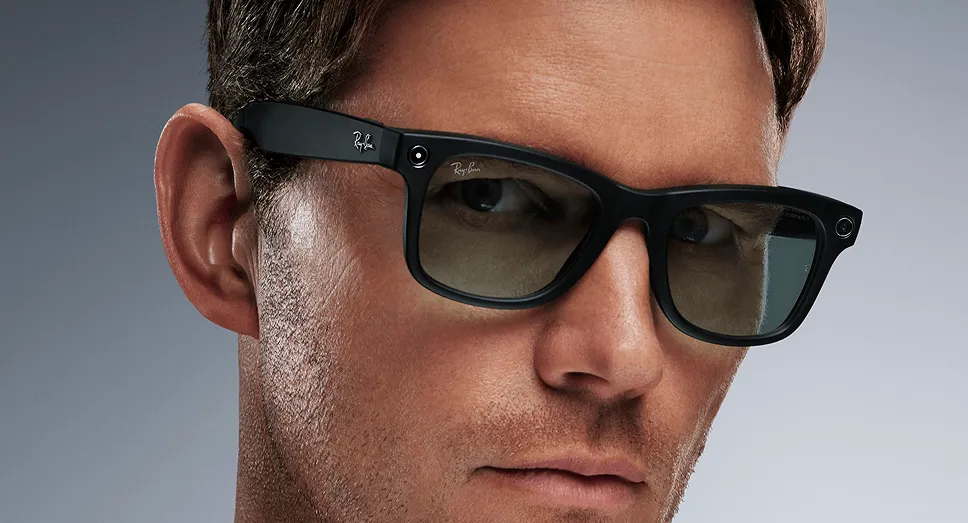
- Wayfarer and classic frame silhouettes that work everywhere
- Subtle tech integration for daily wear
- Fashion-forward materials and finishes
- $449 starting price
- Four-hour battery life (prepare for charging anxiety)
- Urban and social media focus
Oakley Meta HSTN:
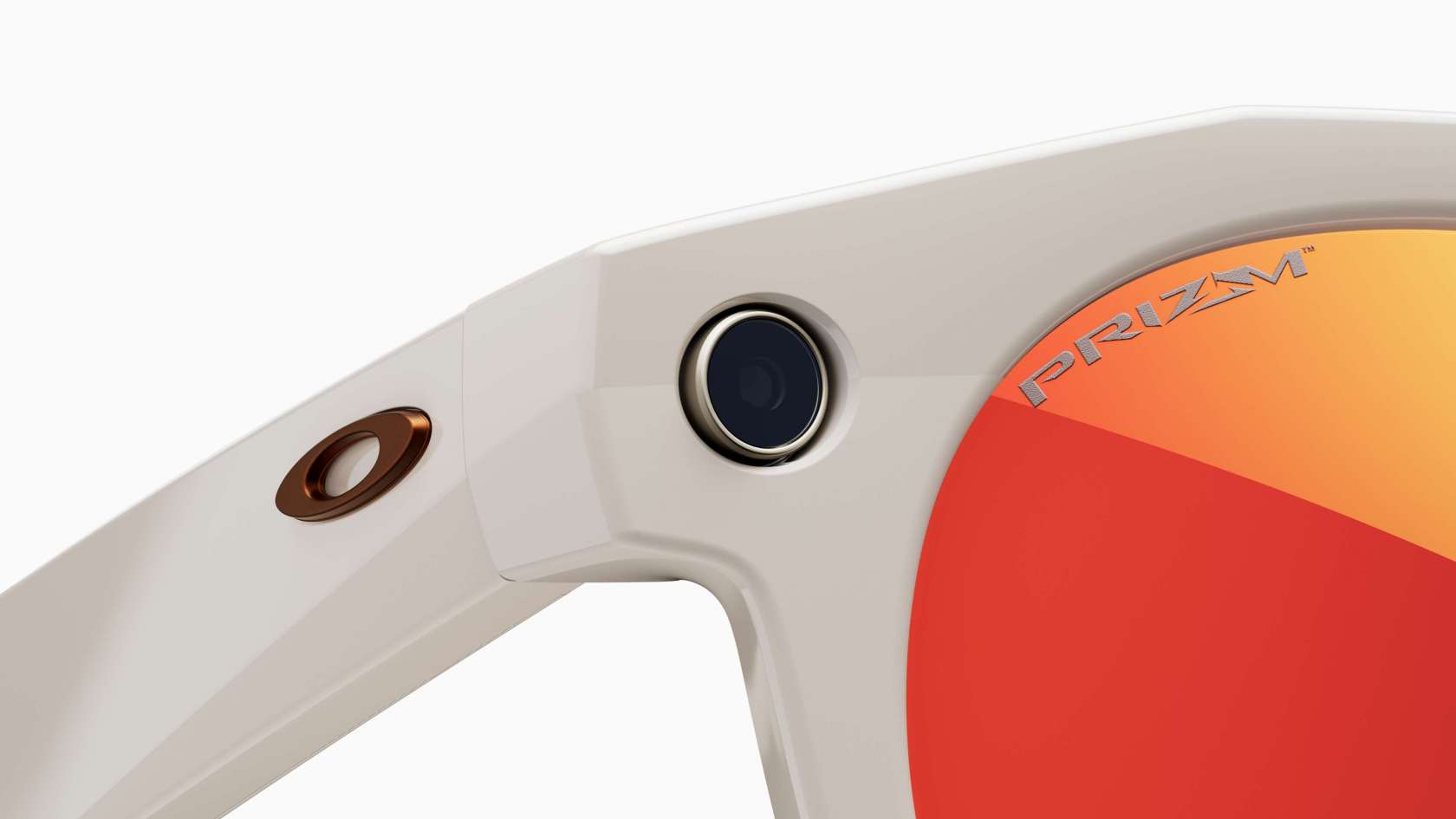
- Wraparound athletic frame geometry that means business
- Bold design language with visible tech elements
- Performance-oriented materials and construction
- $499 limited edition, $399 standard models
- Eight-hour battery life with rapid charging
- Sports and outdoor activity focus
The Ray-Ban version prioritizes discretion and style integration, making the smart features nearly invisible. After wearing Ray-Ban Wayfarers with transition lenses since launch, the versatility of adapting from indoor meetings to outdoor activities without switching glasses proves invaluable. The Oakley model takes the opposite approach, embracing its tech identity with prominent design elements and athletic aesthetics that practically shout performance capability.
Color Options That Actually Make Sense
The Oakley Meta HSTN launches with six distinct frame and lens combinations, each targeting specific use cases rather than just aesthetic preferences:
Limited Edition (July 11 preorder, $499):
- Gold accents with 24K Prizm Polar lenses (for those who like their tech flashy)
Standard Collection (Summer 2025, starting at $399):
- Desert frame with Prizm Ruby lenses
- Black frame with Prizm Polar Black lenses (the safe choice for traditionalists)
- Shiny Brown frame with Prizm Polar Deep-Water lenses
- Black frame with Transitions Amethyst lenses
- Clear frame with Transitions Grey lenses
- Black frame with clear lenses
All frame and lens combinations support prescription lenses for an additional cost. For those who prefer understated options, the black frame variants offer familiar territory without sacrificing functionality.
Lens Technology That Actually Works
Select HSTN models feature Oakley’s Prizm lens technology, representing one of the most advanced innovations in sports optics. Prizm lenses enhance color, contrast, and detail by filtering specific wavelengths of light, making environments appear more vibrant and easier to navigate.
The Prizm variants target specific activities:
- Prizm Ruby: Enhances contrast in bright conditions
- Prizm Polar Black: Reduces glare with polarization
- Prizm Polar Deep-Water: Optimized for water sports and fishing
- Transitions Amethyst/Grey: Adapt to changing light conditions automatically
The Transitions options deserve special attention. Having used transition lenses extensively, their ability to seamlessly adapt from indoor fluorescent lighting to bright outdoor conditions eliminates the constant eyewear switching that plagues regular sunglasses users. This versatility becomes even more valuable when your glasses double as a computer, camera, and communication device.
This lens technology integration maintains Oakley’s optical performance standards while housing Meta’s camera and AI systems. The combination addresses a key limitation of many smart glasses, which often compromise optical quality for tech integration.
AI That Gets Athletics
Meta positions the HSTN as “Performance AI glasses” with sports-specific functionality that goes beyond basic voice commands. The AI assistant provides contextual information relevant to athletic activities, such as wind speed for golf shots or weather conditions for outdoor training.
Hands-free operation becomes crucial during physical activities where manual phone interaction interrupts performance. Voice commands handle photography, video recording, music control, and AI queries without breaking focus or rhythm. Try adjusting your phone settings mid-workout and you’ll understand why this matters.
The wraparound frame design provides better peripheral coverage than traditional rectangular frames, protecting against side glare and debris during outdoor activities. This design philosophy extends Oakley’s heritage in sports eyewear to smart glasses functionality.
Beyond Sports: Real-World Applications
Beyond athletic applications, the HSTN includes accessibility features that leverage Meta AI capabilities. The system can describe visual scenes for users with visual impairments and connect to the Be My Eyes network for volunteer assistance.
Live translation features support international travel and communication, while hands-free messaging enables communication during activities where phone access proves difficult or dangerous. These features work whether you’re navigating a foreign city or simply have your hands full with groceries.
Getting Your Hands on Them
Initial availability covers 15 countries including the US, Canada, UK, Ireland, France, Italy, Spain, Austria, Belgium, Australia, Germany, Sweden, Norway, Finland, and Denmark. Meta plans expansion to Mexico, India, and the United Arab Emirates later in 2025.
The staged rollout reflects Meta’s strategy of establishing market presence in developed economies before expanding to emerging markets where smart glasses adoption may follow different patterns.
What’s Coming Next
Meta confirmed additional Oakley models beyond the HSTN, including a cyclist-focused design based on Oakley’s Sphera frame geometry. This model will feature a centered camera position and aerodynamic frame profile optimized for competitive cycling and road sports.
The expanded Oakley partnership represents Meta’s broader strategy of segmenting smart glasses by lifestyle and use case rather than competing solely on general-purpose functionality. One size doesn’t fit all lifestyles, and Meta seems to finally understand this. Whether you prefer the understated elegance of Ray-Ban or the bold performance aesthetic of Oakley, the choice now exists without compromising on core smart features.
Technology
Goodell, Triple H Address ESPN
The Portland Trail Blazers are being sold to a group led by Carolina Hurricanes owner Tom Dundon, the Hurricanes confirmed in a statement to Front Office Sports. “We can confirm Tom Dundon is in the process of buying the Portland Trail Blazers and is excited about the opportunity,” a Hurricanes spokesperson said. ESPN’s report that […]

The Portland Trail Blazers are being sold to a group led by Carolina Hurricanes owner Tom Dundon, the Hurricanes confirmed in a statement to Front Office Sports.
“We can confirm Tom Dundon is in the process of buying the Portland Trail Blazers and is excited about the opportunity,” a Hurricanes spokesperson said.
ESPN’s report that the team was sold at a valuation north of $4 billion is accurate, according to a source familiar with the matter.
The news of the deal was first reported by Sportico.
That valuation is higher than the most recent Forbes estimate of $3.5 billion for the Blazers, though it is a far cry from the records recently set by rival organizations. NBA team valuations have skyrocketed lately, as evidenced by the Lakers sale at a $10 billion valuation and the Celtics sale at a $6.1 billion valuation.
The buying group—which also includes Marc Zahr, co-president of asset manager Blue Owl Capital, and Portland-based Sheel Tyle, co-CEO of venture capital firm Collective Global—intends to keep the team in Portland, the source confirms.
In July, NBA commissioner Adam Silver said at a press conference, “It is our preference that that team remains in Portland,” and noted the team “likely needs a new arena, so that will be part of the challenge for any new ownership group coming in.”
The Blazers have played in the Moda Center since 1995. It was supposed to be upgraded ahead of hosting the 2030 women’s Final Four, but those plans are reportedly on hold until the team is sold.
The estate of Paul G. Allen put the Blazers up for sale in May, hiring Allen & Company and law firm Hogan Lovells as financial and legal advisers, respectively.
The sale of the Blazers is in line with the wishes of the late Microsoft cofounder Paul Allen, who bought the Blazers for $70 million in 1988 and died in 2018. Since then, Jody Allen has served as her late brother’s executor and trustee of his estate. She has been the chair of both the Blazers and NFL’s Seahawks during that span.
The Seahawks and Allen’s 25% stake in the Seattle Sounders MLS club—the other pro teams Paul Allen requested be posthumously sold—were not put up for sale. Representatives for the NBA and Allen & Co. declined to comment. A representative for the Blazers did not immediately respond to a request for comment.
Dundon is a major player in U.S. pro sports. In addition to the Hurricanes—which in 2018 he bought a majority stake in before taking over the team in its entirety in 2021—he leads investment firms Dundon Capital Partners and Southpaw Capital Partners. He also has a number of other major sports holdings, including a significant investment in Topgolf Callaway Brands and is among the owners of Major League Pickleball.
He was also a backer of the short-lived Alliance of American Football and has become embroiled in controversy over the league’s bankruptcy. There have been two lawsuits filed in the wake of the AAF bankruptcy, one of which was against Dundon. It alleges he fraudulently bought the league in February 2019 from the founder with a pledge to invest $250 million that he had no intention of spending. Instead, the trustee alleges in court filings, Dundon wanted a tax credit to offset gains elsewhere in his portfolio and bought the league to kill it.
Dundon in turn has sued Charlie Ebersol, the AAF cofounder and son of legendary NBC executive Dick Ebersol. The AAF needed a cash infusion in February 2019 when Fowler abruptly pulled out, and Dundon claims Ebersol fraudulently induced him to buy the floundering league and the AAF was a financial basket case.
Those suits are still ongoing.
Technology
Tech and AI converge with key sectors to power innovations across the region
Tech Week Singapore returns this October with Guest of Honour, Mr Tan Kiat How, Senior Minister of State for Digital Development and Information Registration is now open for Asia’s most transformative tech event, bringing together government officials and senior executives from Google, Microsoft, Oracle, Coca-Cola, AI Singapore and more DMEXCO Asia makes its Asia debut, […]
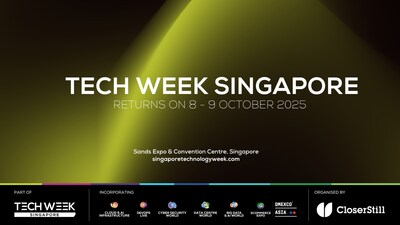
-
Tech Week Singapore returns this October with Guest of Honour, Mr Tan Kiat How, Senior Minister of State for Digital Development and Information
-
Registration is now open for Asia’s most transformative tech event, bringing together government officials and senior executives from Google, Microsoft, Oracle, Coca-Cola, AI Singapore and more
-
DMEXCO Asia makes its Asia debut, bringing together leading decision makers in the region from the digital marketing and advertising world
SINGAPORE, Aug. 13, 2025 /PRNewswire/ — CloserStill Media, a global producer of market-leading events, has announced the return of Tech Week Singapore 2025, taking place at Sands Expo & Convention Centre on 8–9 October 2025. This year’s edition, themed “Connected Futures, Boundless Impact”, will welcome Mr Tan Kiat How, Senior Minister of State for Digital Development and Information, as the Guest of Honour (GOH).
Building on its reputation as Asia’s most transformative tech event, Tech Week Singapore’s 2024 edition recently clinched Best International Show – Asia-Pacific at the AEO Excellence Awards 2025 and Large Trade Show of the Year at the Singapore MICE Awards 2025. The 2025 event will continue to highlight groundbreaking innovations in artificial intelligence (AI) and digital transformation that are reshaping the future of Asia’s business and society, connecting the region’s government officials and industry decision makers to drive meaningful collaboration across industries.
With AI set to innovate and shape industries, Tech Week Singapore 2025 aims to spotlight the boundless potential of Asia’s digital economy. This year’s headliners include senior executives from AI Singapore, The World Bank Group, Google, OpenAI and more, as well as representatives from the governments of Japan and Canada.
In addition to the return of its flagship co-located shows, including Cloud & AI Infrastructure, DevOps Live, Cyber Security World, Data Centre World, Big Data & AI World and eCommerce Expo Asia, Tech Week Singapore 2025 marks the debut of DMEXCO Asia, bringing DMEXCO – Europe’s leading digital marketing and tech event to Asia. Launched in partnership with Koelnmesse and BVDW, the co-branded eCommerce Expo | DMEXCO Asia event cements Singapore’s position as a dynamic hub for digital business and marketing innovation.
This year’s edition will host over 600 regional and international speakers with special conference theatres to drive conversations between industry professionals. Senior IT leaders are expected to be present, providing attendees with high-impact networking opportunities.
Technology
A Tale of Two Markets
The wearable tech sector, once a beacon of innovation, now stands at a crossroads. On one side, legacy leaders like Fitbit grapple with eroding market share and financial strain. On the other, emerging players such as Fitness Fanatics Ltd, a Hong Kong-based company preparing for a $9 million IPO, offer a glimpse of disruptive potential. […]

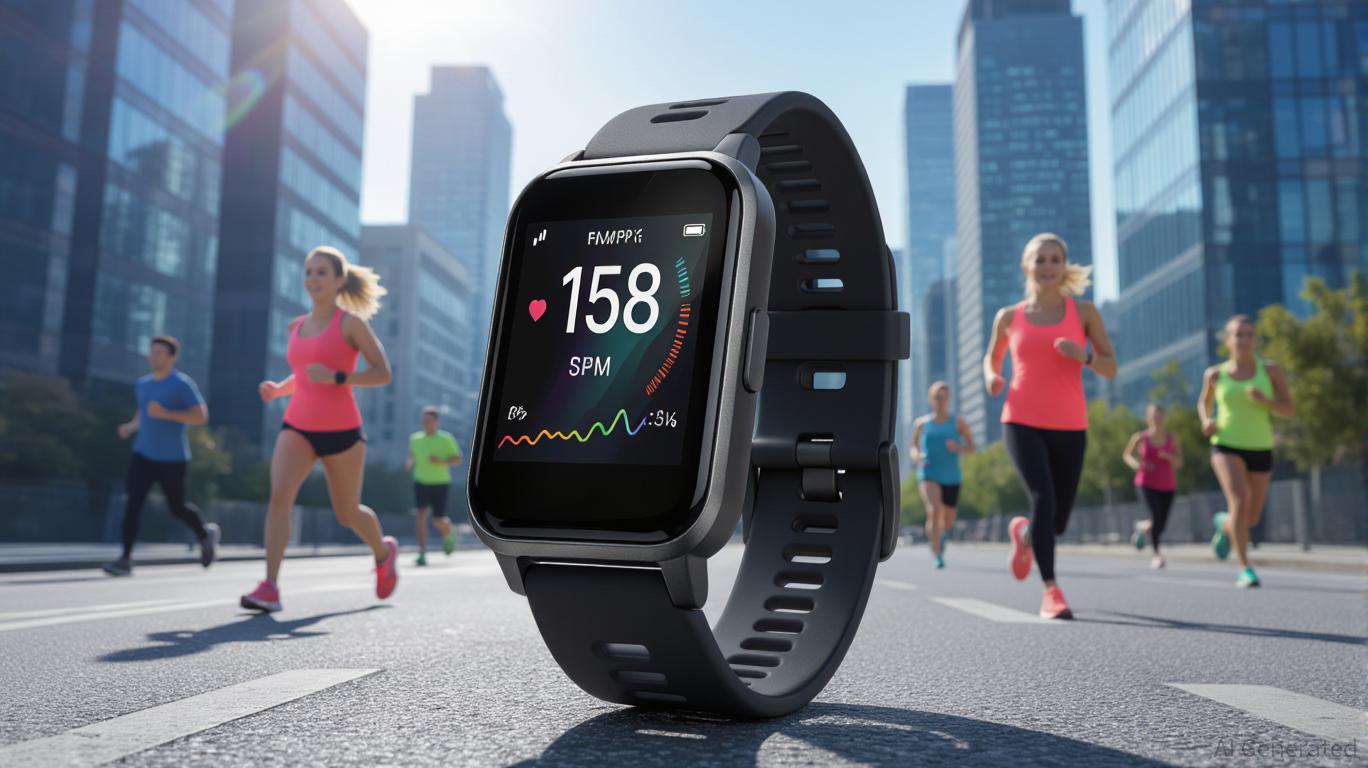
The wearable tech sector, once a beacon of innovation, now stands at a crossroads. On one side, legacy leaders like Fitbit grapple with eroding market share and financial strain. On the other, emerging players such as Fitness Fanatics Ltd, a Hong Kong-based company preparing for a $9 million IPO, offer a glimpse of disruptive potential. This article examines the contrasting trajectories of these two archetypes, asking whether the future of wearable tech lies in the hands of established giants or agile newcomers.
The Decline of Fitbit: A Cautionary Tale
Fitbit’s Q2 2025 results underscore a familiar narrative: a once-dominant innovator now struggling to retain relevance. The company reported a $0.14 loss per share, with revenue of $313.56 million—a modest improvement over the prior year but far from a turnaround. Fitbit’s market share in the global wearables market has dwindled to 4.4%, eclipsed by Apple (34.2%), Samsung (9.8%), and Xiaomi (8.8%). Its acquisition by Google in 2019, intended to catalyze growth, has instead muddied its brand identity and diluted its focus on fitness-centric features.
Fitbit’s product lineup, while robust, lacks the ecosystem integration that defines Apple’s success. The Charge 6, its flagship device, offers advanced metrics like ECG and SpO2 but remains tethered to a narrow health-tracking niche. Meanwhile, Apple’s Watch Series 9 combines health monitoring with seamless smartphone integration, payment functionality, and a thriving app ecosystem. Fitbit’s reliance on a loyal but aging user base (61.79% in the U.S.) contrasts sharply with the younger, tech-savvy demographics driving smartwatch adoption.
Fitness Fanatics: A New Breed of Disruptor?
Fitness Fanatics Ltd, by contrast, represents a different kind of ambition. The company, which filed for a $9 million IPO in May 2025, is not a wearable tech manufacturer but a distributor of sports nutrition products. Yet, the hypothetical analysis of its competitive positioning in the wearable tech sector—crafted from the data provided—reveals a compelling narrative.
Assuming Fitness Fanatics were a wearable tech company, its financials would suggest a high-growth story. With $19 million in 2024 revenue and a P/S ratio of 7.35, the company’s $143 million valuation implies aggressive expectations. Its expansion into Hong Kong, China, and Malaysia, with over 1,000 points of sale, highlights a regional focus that could insulate it from the global saturation affecting Fitbit.
The hypothetical analysis also notes Fitness Fanatics’ potential to leverage localized strategies, competitive pricing, and AI-driven fitness insights—features that could resonate in markets where Apple’s premium pricing is a barrier. Unlike Fitbit, which is constrained by Google’s corporate structure, Fitness Fanatics would operate with the agility of a standalone entity, enabling rapid iteration and customer-centric innovation.
The Investment Dilemma: Legacy vs. Disruption
The dichotomy between Fitbit and Fitness Fanatics mirrors a broader debate in tech investing: should capital flow to proven but stagnant incumbents, or to unproven but agile newcomers? Fitbit’s struggles highlight the risks of over-reliance on a single product category and the challenges of competing with tech giants. Its $0.14 loss per share and declining revenue underscore the difficulty of sustaining growth in a market dominated by Apple’s $57.2 billion smartwatch revenue forecast for 2025.
Fitness Fanatics, on the other hand, embodies the optimism of a sector in flux. Its IPO valuation, while lofty, reflects investor confidence in its ability to exploit gaps in the market. For instance, the hypothetical analysis suggests that Fitness Fanatics could target the 35–44 age group—a demographic with high engagement in wearable tech—by offering tailored health insights and affordable devices. This strategy aligns with the growing demand for wearables that prioritize fitness over multifunctionality, a niche where Fitbit has historically excelled but now lags.
Strategic Considerations for Investors
For investors, the key lies in balancing risk and reward. Fitbit’s $313.56 million revenue and 128 million registered users provide a stable foundation, but its path to profitability remains uncertain. The company’s recent focus on healthcare partnerships, such as Singapore’s diabetes prevention programs, hints at untapped potential—but execution will be critical.
Fitness Fanatics, if it were a wearable tech company, would require a leap of faith. Its $143 million valuation implies a 63.55% revenue growth rate, a figure that must be sustained to justify the P/S ratio. However, its regional focus and agile business model could mitigate some of the risks associated with global competition. Investors should monitor its ability to scale distribution channels and differentiate its product offerings in a market where Apple’s ecosystem dominance is a formidable barrier.
Conclusion: The Future is Uncertain, but Not Hopeless
The wearable tech sector is a paradox: it is both saturated and ripe for disruption. Fitbit’s decline serves as a warning that even the most innovative companies can falter without continuous reinvention. Meanwhile, Fitness Fanatics’ IPO—hypothetically positioned as a wearable tech entrant—demonstrates the allure of a market where agility and localization can offset the dominance of tech giants.
For investors, the lesson is clear: diversification is key. While Fitbit’s struggles suggest caution, the sector’s growth potential—projected to reach $138.7 billion by 2033—warrants a measured bet on emerging players. The challenge lies in identifying those with the vision to redefine the category, not merely replicate it. In this high-stakes arena, the winners will be those who can navigate the fine line between innovation and imitation.
Technology
Is Cutting-Edge Drone Feature Spoiling the Game?
Golf’s Tech Revolution: Are Innovations Spoiling the Game? LIV Golf Faces Backlash! In the world of golf, where tradition meets technology, a seismic shift is underway! Just two months ago at the 2025 RBC Canadian Open, the PGA Tour introduced a groundbreaking feature: drone AR smart tracing. While this high-tech marvel dazzles on the surface, […]

Golf’s Tech Revolution: Are Innovations Spoiling the Game? LIV Golf Faces Backlash!
In the world of golf, where tradition meets technology, a seismic shift is underway! Just two months ago at the 2025 RBC Canadian Open, the PGA Tour introduced a groundbreaking feature: drone AR smart tracing. While this high-tech marvel dazzles on the surface, a critical question looms—does it enhance the viewer experience, or is it a game-ruining spoiler?
Critics are firing back with a resounding “NO!” at the 2025 St. Jude Championship, where the tech faced fierce criticism from none other than the hosts of Fried Egg Golf. One host boldly declared it “the dumbest thing to hit exist in the history of golf broadcasting.” Their argument is compelling: instead of building suspense and excitement—a hallmark of what makes golf thrilling—this technology reveals outcomes ahead of time, effectively spoiling the drama.
Frankie from Fried Egg Golf hit the nail on the head when he pointed out that golf lacks the physical confrontations found in other sports. “There’s no collisions, there’s no fights, there’s no hits,” he said. Fans tune in for nail-biting putts and the emotional rollercoaster that is the game. “Don’t f*cking tell us the ending. What are you, nuts?” he exclaimed, echoing the frustration of many golf enthusiasts.
But it’s not just the PGA Tour that is under fire. LIV Golf, which launched its own drone technology earlier this season, isn’t escaping the heat either. The hosts of the Fore Play Podcast Plus weighed in, highlighting their struggles with LIV Golf’s Drone Tracer tech. Trent voiced his concerns, asserting, “I struggle with it,” while Riggs lamented, “In golf, that’s kind of the excitement that we get. And they’re just telling us what it’s going to do.”
Originally, golf’s tracer technology was rudimentary, merely aiding players in shot evaluations. The introduction of radar-based launch monitors in the early 2000s heralded a new era, improving precision in tracking essential metrics. Yet, despite these advancements, LIV Golf continues to invest heavily in technology—even to the tune of billions.
LIV Golf’s tech chief boldly stated that they are “creating a more connected and engaged future” for the sport. In a remarkable move, the league recently inked a deal with Salesforce, a tech behemoth valued at $250.11 billion. This partnership aims to revolutionize the fan experience, tournament logistics, and player engagement through AI technology via Salesforce’s cutting-edge Agentforce platform.
Bryson DeChambeau, a prominent figure in LIV Golf, expressed palpable excitement about the partnership, saying, “We are excited about a long, impactful future ahead for LIV Golf, buoyed by our ability to welcome and engage a broader, more diverse global audience.”
Denise Taylor, LIV Golf’s Head of Product and Technology, emphasized the importance of this collaboration, noting, “Our partnership with Salesforce marks a major step forward. With Agentforce, we’re bringing the power of AI technology to the forefront of sport, creating a more connected and engaged future for our fans, players, and the fantastic game of golf.”
The revolutionary Agentforce will introduce a feature known as Fan Caddie, delivering real-time updates directly to fans through the LIV mobile app. This will include shot-by-shot analyses, player stats, ticketing assistance, and personalized content suggestions. Moreover, Agent Caddie promises to enhance broadcasts with predictive outcomes and strategic insights, paving the way for a new era in golf viewership.
Furthermore, LIV Golf has already garnered accolades for its innovative Any Shot, Any Time feature, winning the Sports Technology Award for Best Use of Fan Engagement Technology. This initiative has been praised for its ability to provide fans with immediate, customized experiences that redefine how they engage with live golf.
As the dust settles on this technological upheaval, one thing is clear: the future of golf is intertwined with tech, for better or worse. The question remains—will these innovations elevate the sport, or will they overshadow the very essence of what makes golf captivating? The debate rages on, and fans are left to wonder: is the thrill of the game worth sacrificing for the sake of technology? One thing is certain: golf will never be the same again!
Technology
Canisius University launches sport data analytics program
Canisius University is launching an online Sport Data Analytics program in Fall 2025. BUFFALO, N.Y. — Canisius University is launching their new Sport Data Analytics program in the Fall 2025 semester. The university says the fully online, 12-credit advanced certificate in sport data analytics will prepare students for success in a $4.4 billion global market […]

Canisius University is launching an online Sport Data Analytics program in Fall 2025.
BUFFALO, N.Y. — Canisius University is launching their new Sport Data Analytics program in the Fall 2025 semester.
The university says the fully online, 12-credit advanced certificate in sport data analytics will prepare students for success in a $4.4 billion global market that is expected to grow by more than 30% each year.
RELATED: UB will launch seven new AI degrees in Fall 2025
“The field is evolving quickly, with more than three-quarters of professional sports teams now using real-time analytics to gain a competitive advantage,” says Shawn O’Rourke, Dean of the Division of Business, Communications & Health Studies. “This program equips professionals to interpret complex data and apply it in ways that directly impact performance, strategy and decision-making.”
The program is designed to be completed in one year or less and offers flexibility for working professionals, recent graduates, and career changers. Students will get hands-on experience with real sports datasets and become comfortable using industry-standard tools like R and Tableau.
“What sets this program apart is its blend of technical rigor and real-world application,” O’Rourke. “We train students to work with the exact types of data, tools and challenges they’ll encounter in the industry, whether in a professional team’s Analytics Department, a sports tech company or a betting firm.”
Applicants must already have a bachelor’s degree or equivalent professional experience before applying.
The program complements Canisius’ existing graduate programs in data analytics and business analytics. The university also offers 4+1 degree in mathematics leading to an MS in data analytics and a 4+1 degree in psychology leading to an MS in data analytics.
Technology
New Study Shows Smartwatch Stress Sensors Have No Idea What They’re Doing
You might want to think twice before you put a lot of stock in the latest stress charts from your fitness wearable. A recent study from the Netherlands’ Leiden University, published in the Journal of Psychopathology and Clinical Science, has found that when smartwatches and similar devices record readings on stress, fatigue or sleep, they’re […]

You might want to think twice before you put a lot of stock in the latest stress charts from your fitness wearable. A recent study from the Netherlands’ Leiden University, published in the Journal of Psychopathology and Clinical Science, has found that when smartwatches and similar devices record readings on stress, fatigue or sleep, they’re frequently getting it wrong.
Researchers studied 800 young adults using the same Garmin Vivosmart 4 smartwatch model. They compared the data the smartwatches produced with the reports that the users created four times per day about how sleepy or stressed they were feeling. Lead author and associate professor Eiko Fried said the correlation between the wearable data and the user-created data was, “basically zero.”
A representative for Garmin did not immediately respond to a request for comment.
Stressed or sex? Your watch doesn’t know
So why do wearables like fitness smartwatches get it so wrong? Their sensors are fairly limited in what they can do. Watches like these need to be worn correctly at all times (a loose or tight watch may give poor readings, for example), and they typically use basic information like pulse rate and movement to make guesses about health.
Those guesses don’t always reflect real-world scenarios. A wearable may identify high stress when the real cause of the change was a workout, excitement over good news, or sex. There are so many potential alternatives to stress or fatigue that the watches in the study never really got it right — and the devices sometimes guessed the complete opposite emotional state from what users recorded.
The Dutch study did note that Garmin’s Body Battery readings, which specifically measure physical fatigue, were more reliable than stress indicators, but still inaccurate. And sleep sensing performed the best of them all, with Garmin watches showing a two-thirds chance of noting the differences between a good night’s sleep and a bad one.
It’s also worth noting that smartwatch sensors can become more accurate as technology improves. It would be interesting to run a similar study with the newer Garmin Vivosmart 5 to see if anything has improved, as well as see if other models like the latest versions of the Apple Watch have similar accuracy results.
-

 Technology2 weeks ago
Technology2 weeks agoAlly Runs New Game Plan in WNBA All-Star Rookie Debut
-

 Health2 weeks ago
Health2 weeks agoThe Women Driving A New Era In U.S. Ski & Snowboard
-

 High School Sports3 weeks ago
High School Sports3 weeks ago100 days to men's college basketball
-

 NIL2 weeks ago
NIL2 weeks agoESPN Announces 'dont wait run fast' by mgk as New College Football Anthem for 2025
-

 College Sports3 weeks ago
College Sports3 weeks agoCity rows to sporting destination goal on boats of new complexes & old strengths
-
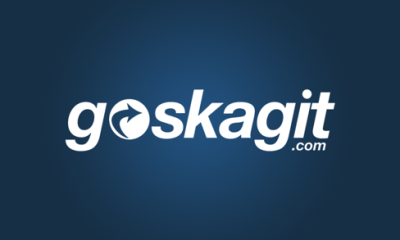
 Sports3 weeks ago
Sports3 weeks agoNtekpere honored as Second Team Academic All-American | APG State News
-

 Health3 weeks ago
Health3 weeks agoTrump administration investigates Oregon's transgender athlete policies
-

 Rec Sports1 week ago
Rec Sports1 week agoSwimming & Diving Comments on the Rules – 2025-26
-

 Technology1 week ago
Technology1 week agoAmid Sports Chaos, ‘Known’ Data and Outcomes Help Agency Win
-

 Sports3 weeks ago
Sports3 weeks agoMore State Schools of the Year
































